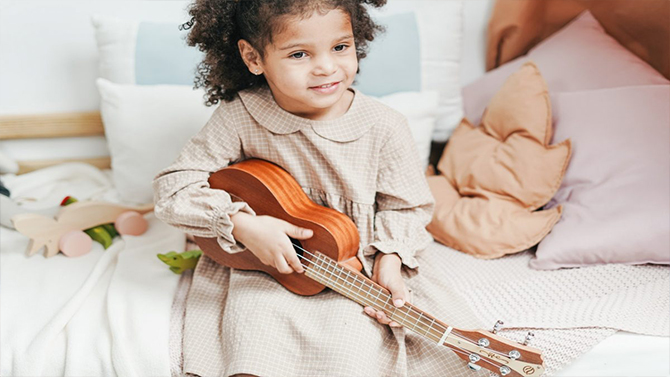Source: Raising Children (Australia)
What is music therapy?
There are many different types of music therapy. For autistic people, music therapy uses interactive musical activities to improve social and communication skills.
Who is music therapy for?
Music therapy is for anyone of any age or ability.
What is music therapy used for?
Music therapy is used to improve social and communication skills.
Where does music therapy come from?
Music therapy was first used for children with additional needs in the early to mid-1900s in the United States. Its use became more widespread in the 1950s and 1960s in the United Kingdom.
Music therapy for autistic children developed as a way to improve these children’s difficulties with social interaction and communication.
What is the idea behind music therapy?
Music therapy can give people who can’t easily communicate a way of communicating and interacting. Instead of using words to communicate, they can instead use a range of musical activities – singing, playing instruments, improvising, songwriting and listening to music. These activities are intended to promote communication and social skills like making eye contact, sharing attention and taking turns.
Therapists can also use musical activities to teach new skills. This happens by pairing new skills with their own musical cues. Once children have learned the skills, they no longer need the cues. The cues are gradually phased out until the skills happen by themselves.
For an autistic child, a music therapist might also write lyrics about specific behavior – for example, turn-taking. The therapist sings the lyrics to the melody of a song the child knows well. The idea is that the child might be better able to focus on sung information than spoken information.
What does music therapy involve?
Music therapy typically involves the following stages:
- Assessment: the therapist assesses a child to find out the child’s needs. Because music therapy is often used along with other autism therapies, the therapist might also consult the child’s GP or other therapists.
- Goal-setting: an individualized program is developed based on the child’s needs.
- Activities: sessions consist of activities designed to meet the child’s individual needs. These could include songwriting, moving to music, singing, playing instruments, listening to music, working in groups and improvising.
- Evaluation: the program is regularly evaluated to make sure it’s working well.
Music therapy sessions can be one on one or in a group.
Children typically attend once a week, for about 20-50 minutes. The duration of the therapy depends on children’s needs.
Cost considerations
The cost per session varies and depends on the therapist.
You might be able to include the cost of music therapy in children’s NDIS plans. You can contact the NDIS to find out.
Does music therapy work?
Research has shown that music therapy can help children develop or improve particular skills like shared attention. It might help autistic children and children with intellectual disabilities more than typically developing children.
More high-quality research is needed.
Who practices music therapy?
Registered music therapists practice music therapy. A registered music therapist is someone who has completed an accredited training program and is registered with the Australian Music Therapy Association.
Music therapists work in a range of organizations including special schools, nursing homes, early intervention centers and mental health facilities. They also work in private practice.
Many therapists work with specific groups of people, so not all will have experience in working with autistic people. You’ll need to check the experience of any therapist you choose to work with.
Parent education, training, support and involvement
You don’t need to do any training for this approach.
Where can you find a practitioner?
You can find a registered music therapist on the Australian Music Therapy Association website.
If you’re interested in music therapy it’s a good idea to talk about it with your GP or one of the other professionals working with your child. You could also talk about it with your NDIA planner, NDIS early childhood partner or NDIS local area coordinator (LAC), if you have one.
There are many therapies and supports for autistic children. These range from behavior therapies and developmental approaches to medications and alternative therapies. When you understand the main categories that these therapies and supports fall into, it’ll be easier to work out the approach that will best suit your child.
There are many therapies and supports for autistic children. These range from behavior therapies and developmental approaches to medications and alternative therapies. When you understand the main categories that these therapies and supports fall into, it’ll be easier to work out the approach that will best suit your child.

